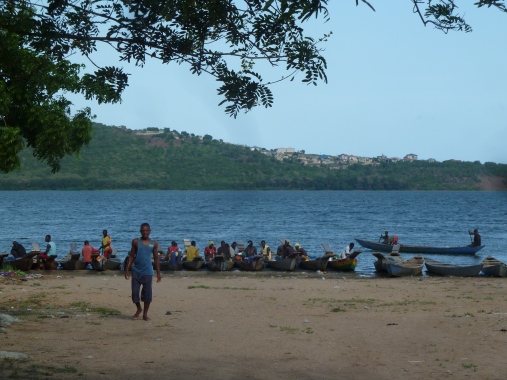By Prof Louis Albert Tchuem Tchuenté, Pamela Bongkiyung & Prof Russell Stothard
Who has the perfect answer to controlling or eliminating a disease? It gets more difficult when simply using medication does not guarantee no re-infection. In the case of Schistosomiasis and Soil-transmitted Helminthiasis, in the agenda of elimination one wonders if what we need are more parasitologists in the affected areas or getting the current ones to be more publicly engaged in educating the population?
Prof. Louis-Albert Tchuem Tchuenté who has been working on schisto control for over three decades emphasises the control of Schisto as many other NTDs is a long-term combat. That means a lot of investment and capacity building at all levels. It also needs to have the involvement of many actors and stakeholders. It is difficult for a single organisation or a single group to interrupt the transmission of this disease. That is why intersectoral cooperation, partnership and involvement of stakeholders at all levels is very important. Policy makers, scientists, community health workers, health personnel staff, teachers and all category of the population need to be involved in this fight.
Training of parasitologists is very important because in the African setting more needs to be done. It is vital to optimise and adapt the strategy according to the different transmission setting. The same strategy cannot be deployed as it will not have the same impact. That is why for example in Cameroon, when you compare the current distribution of Schistosomiasis to what was done 25 – 30 years ago; there is a significant decrease in some areas. We have examples where transmission has been interrupted, we have many examples where prevalence has been lowered to more than 80 – 90 percent in some of the localities.
But we still have some challenges where the dynamics vary. The disease prevalence is reducing but variances remain due to the existence of conditions that allow for the transmission cycle to continue. That is why moving from control to elimination requires integration is intensified. Part of this requires increasing capacity building by training more students, investment, health education, change in behaviour and increase awareness of the population. It is a huge challenge.
The Sustainable Development Goals (SDG) has as one of its key point a call for countries to invest more for the control and elimination of Neglected Tropical Diseases (NTDs). Therefore, for the transmission of schistosomiasis to be interrupted there is a need for countries to invest more for the elimination of this disease. When more is invested, this means that we also should invest in equipment, in sanitation, in access to water and change of the environment or that you improve the hygiene.
Prof. Tchuem Tchuenté said: “Granted, the control of schistosomiasis is very challenging, it is a long-term commitment which is feasible. At this stage, there are tools and strategies in place to interrupt the transmission of schistosomiasis; what we need now mainly in Africa is that we must change our approach to become more ambitious. We must move completely from control to elimination. This shift in paradigm should be clearly effective and endorsed by all African countries.”
He believes that when we keep the word ‘control’, we can be satisfied with morbidity control and therefore control morbidity forever. If the agenda shifts to elimination, then the momentum and the target aligns with that shift. Lymphatic Filariasis (LF) programmes have used this approach. The LF programme’s target for years has been elimination and this makes us put a lot of effort into its elimination.
There is a tendency to become complacent when you reduce a disease to the level where it no longer constitutes a health problem. This is when we need to be most careful as you could miss when the disease makes a come-back again. But if you have a target for elimination, this means additional or further efforts to interrupt the transmission and then to move to the surveillance phase. Japan is one of the good examples. In the 1960s, there were some areas in Japan where the prevalence of schistosomiasis was higher than in most parts of Africa. But they decided and launched a ‘zero parasite’ campaign. From the beginning, it was not about control but zero parasites; meaning elimination. In less than 20 years Japan has eliminated schistosomiasis. China started with control but then rapidly moved to the elimination phase. Now their objective is to eliminate everywhere in China.
The COUNTDOWN project is in a key position to contribute to this agenda. Our research aims to increase acceptability, affordability, accessibility and availability of Neglected Tropical Diseases solutions. Our multidisciplinary approach is investigating efficient methods to cost-effectively upscale mass drug administration programmes, thereby moving the agenda closer to elimination.
With this word elimination, you must put the necessary efforts and investment to interrupt transmission. In Africa, the time is right to think about this and to shift completely from control to elimination. It is not easy as this will require a lot of investment. We need to raise momentum and commitment from the government, including investment. That is what the SDG is about; as espoused in one of its goals – for countries to invest more for the elimination of NTDs!
To find out more about our research visit our partner website: http://countdowncameroon.org/
Follow our activities via our Twitter accounts:
@NTDCOUNTDOWN @NTDGHCOUNTDOWN @COUNTDOWNNTDCAM @COUNTDOWNLR @COUNTDOWNNG




